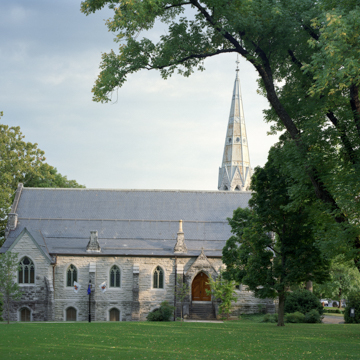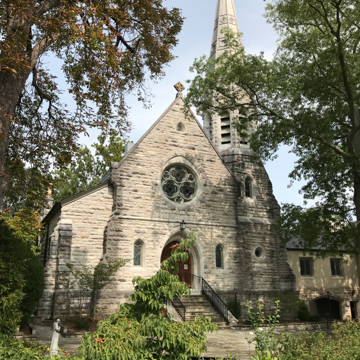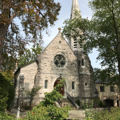You are here
Grace Episcopal Church
The congregation replaced a Greek Revival church with this, one of Lexington's finest examples of Gothic Revival, a style especially popular among Episcopal congregations. The rusticated stone church has side buttresses, traceried stained glass windows, and a side tower with a soaring spire. The interior, central-aisled nave has impressive hammer-beam roof trusses. The most famous member of the congregation was Robert E. Lee, who was an active parishioner, serving on the vestry from his arrival in Lexington in 1865 to his death in 1870. The church, which was named in his honor in 1903, was renamed in 2017. One distinctive feature is the High Victorian Gothic interior painting that survives over the altar area. Paid for in 1883 by Lee's son, G. W. Custis Lee, the decorative scheme originally covered all the walls, but that proved to be too much for the congregation's twentieth-century sensibilities, and in the 1930s it was painted over. Besides the altar area, one fragment of the original work has also been preserved on the west wall.
Writing Credits
If SAH Archipedia has been useful to you, please consider supporting it.
SAH Archipedia tells the story of the United States through its buildings, landscapes, and cities. This freely available resource empowers the public with authoritative knowledge that deepens their understanding and appreciation of the built environment. But the Society of Architectural Historians, which created SAH Archipedia with University of Virginia Press, needs your support to maintain the high-caliber research, writing, photography, cartography, editing, design, and programming that make SAH Archipedia a trusted online resource available to all who value the history of place, heritage tourism, and learning.


















